























Walk into and you’ll begin to experience kitchens and bathrooms di
erently. For over 10 years, we have brought the unexpected to our region. Unique brands and unlimited creative possibilities continue to make us the number one choice for designers, builders, contractors, and homeowners. What you thought about fixtures is fictional; visit us to immerse yourself in glamour.


14 The Glass House
22 Pitch Perfect
29 The Power of Alchemy
33 Eternal Spring
38 Wine on the Fly
40 Catch A Wave
42 Bibliotaph…
44 Peach Fuzz
48 Storming the Castle
54 For the Birds
56 Old Dog, New Tricks
58 Minimal to the Max
67 U.S.: Cheers. French: Santé; German: Prost
83 SLAM Gala
85 The Rally for The Rep

Spring (break!) is around the corner and Colonial Marketplace has everything you need this season. With more than 20 unique boutiques, great food, and best-in-class services, you can eat, shop, and experience – all in one place.

Medical Weight Loss Therapy with Semaglutide. $350/month







Dominic Michael Salon
Reinforcing shampoo and conditioner formula infused with vitamin B6 and Biotin, for instant reduced breakage. ($90 value). $75
 Caisi Sea Carousel Dress. $90
Louis Vuitton Dauphine MM Bag, $2,650
Arthur Court Grape and Entertainment Tray. $275
Minnie Rose shrunken blazer. $398
The Pasta House Co. Salad Dressing. $5
Caisi Sea Carousel Dress. $90
Louis Vuitton Dauphine MM Bag, $2,650
Arthur Court Grape and Entertainment Tray. $275
Minnie Rose shrunken blazer. $398
The Pasta House Co. Salad Dressing. $5


IV Nutrition Inner Immune $99

Grande LASH Enhancing Serum. $70

“Sugar Rush” strapless bandeau $66 Full coverage bottom by Kulani Kinis $66

The Composable Bracelet from Nomination Italy. Prices vary

Comfort Terry Pant. Feels like sweats, looks like chinos. $128

The Original Pancake House
Triple Berry Waffle $15


Cherry Dress in Taffy Gingham Pique . $150
Cherry Louise with collar pink gingham pique. $150

Taber by VANELi. Chic comfort: glove leather, twisted straps, and a stylish kitten heel! $175
Craig
Christy
Grayling
Rachel
Karen
Alexa
Rosalind
Christy
Stephanie
Carmen



I recently saw “American Fiction.” On the way out of the theater, I heard someone say the movie “was too black.” The irony for me is this was not a “black” movie, but rather a well-conceived story about an underrecognized artist, the societal perceptions of Black American men, and the complexities of familial and intimate relationships. If anything, it is making fun of white audiences, but I think this is too simplistic a view.
I was thrilled to see it nominated for an Oscar, but it made me really consider how I ended up thinking the way I do and why others see the world so differently. I was born in the Bronx and now live comfortably in a sophisticated bubble. My father wasn’t particularly progressive; he didn’t vote for Barak Obama because he feared Obama would be like Al Sharpton in the White House. I didn’t talk to my dad for a month after he said that. I am proud to be Jewish but support a two-state solution and hope we can find peace with the Palestinians. I am a man but find a woman’s right to choose to be fundamentally American. Am I a hypocrite or just someone who believes there are many views and asking people to all agree is unrealistic? The world isn’t left or right, blue or red, Judeo-Christian or Muslim, conservative or liberal. We all live on this continuum, yet our world is being run by extremists who benefit when we can’t agree.
As I see it, the problem is that human nature forces us to choose one or the other. If we had three or more choices, perhaps there would be more diverse thinking and better options. Now, our leadership fears saying anything that may upset someone in their party or a big donor. Do we really want the country’s philosophy driven by what we can’t agree on? The people, not the party, should decide the most important issues to debate.
We are at a crossroads. We all learned some form of American History but it appears it is being interpreted in different ways. We are a nation built by immigrants. The Constitution calls for a separation of church and state. We all believe in freedom, but not always the freedom to choose which books our children read and the history of our nation no matter how difficult it is to hear. Political experts agree that the conditions in the U.S. are frighteningly similar to those just prior to the Civil War. With the world seemingly on fire, don’t we have bigger issues than fighting among ourselves?
As I walked my dog on Lindell Boulevard last night, I noticed a number of windows displaying Palestinian flags. The Central West End has also had “From the River to the Sea” marches since the start of the war. At first, I was scared and concerned, but as I thought about it, I decided that the better approach is to have coffee with my neighbors to better understand them and to see how we can think together to bring about positive change. I am sure there are many things we agree on and we have to find ways of building friendships and bridges, not bullhorns and slogans.
We must stop treating people as “others” and start to understand where they are coming from. I admit it is hard sometimes, but I don’t believe hatred will go away on its own. We have to get to know each other better, talk about our differences, invite people to our homes, and have our children play together. Some of the best experiences I have had were when we invited Christian families to our Passover Seder. Or, as a child, when I invited my new friend who didn’t look like me to spend the weekend at our home. Or when I’ve discussed politics with friends who see things very differently from me.
I don’t want “others” to see things my way, but I am convinced it is hard to hate someone you value as a friend.
I am excited to live in a multi-ethnic, multi-national, multi-lingual, multi-religious country which defends the rights of ALL. This has never happened in the history of the world. But we are hitting speed bumps. Not everyone likes this in practice, especially when we don’t have enough resources for our residents. This is a problem, but from my vantage point, a good one to have. Other countries are losing population because there are no opportunities and the politics are oppressive. Let’s figure this out before ours is.
If you want to meet and discuss the world and our differences, please contact me at 314 363-3333 or craig@slmag.net
Craig M. Kaminer, Publisher craig@slmag.net
Through his highly professional, informed, and diligent approach, Larry Levy provides outstanding expertise and professional representation to his valued clients. With 25 years in transactional sales, his proficient counsel, keen insights, integrity, and resourcefulness are highly valued.







He is intimately connected as a specialist in acquiring and marketing luxury properties. He truly enjoys sharing his insights into the rich and charming historical character of Larry’s luxury referral network coast to coast. Larry is renowned for his expertise in luxury real estate and has built a network of top-tier professionals nationwide. His extensive network and dedication to unparalleled service make him an ideal partner for any luxury real estate needs.


The first time these clients called Kelly Johnson of Kelly Johnson Design, they asked her to redo their home in Frontenac. Then they changed their minds. They found a house in Ladue with “good bones” but not in the style they wanted. The walls were clad in barnwood; the view just beyond the cathedral front door was into a massive bar at the back; the ceilings were low; the interior was rustic and dark.
“It was a mishmash of Spanish Mission with mountain modern,” says architect Nick Adams of mademan design.
But these homeowners wanted a house that was clean, contemporary, fresh, and flooded with light.
“We really wanted the open concept, a modern yet warm home,” the homeowner says.
So, Kelly created a team with Nick Adams and Kelly Kenter, president-ceo of the construction company Sitelines, to make that vision a reality.
The result is, in a word, stunning.
“The before and after is night and day,” Kelly says.
The view from the glass front door now soars through the house to a newly built poolside pavilion in the back that is fronted by a wall of waterfalls. The home’s rustic flooring has been replaced with 2-by-4 feet porcelain tiles that run throughout the house and (in a thicker version) onto the outside living area.
“Now this home is a glass house so the inside and outside are seamlessly blended together with the architecture,” Kelly says.
With the exception of one sofa (which they got rid of later), the homeowners sold all their belongings from their Frontenac house. Nothing beyond the basic footprint of the original Ladue house remains the same. The house measures more than 12,500 square feet of indoor-living space with four bedrooms, four full baths, and seven powder rooms.
“Nick did a brilliant job with the architecture,” Kelly says, adding later, “I have to tell you, Nick is, in my opinion, one of the most talented architects in St. Louis.”
The homeowner agreed. “He gets it and he’s very creative. He narrows it down to what you’re looking for and he has great vision.”
When they started, Nick says he “pushed to get everything on the same page. We got rid of all the mountain modern. We were trying to be reasonable about spending the client’s money. The stucco, the wood shake shingles, the concrete is all part of modern architecture. We took it to more of a California Mission style.”
The house’s color palette of white, gray, and black just “seemed to organically blend with the architecture,” Kelly explains. The great room inside the front door was completely redone with seating that leads onto the dining room and kitchen. An Arthur Osver painting sourced by Bridget Melloy of projects + gallery from Philip Slein Gallery hangs over the mantle. Dramatic lighting selected with the help of Bill Hughes at Amini’s illuminates the space. A large glassenclosed wine cellar divides the dining room from the stairway. Instead of having one huge dining table, they added two.



 The Great Room is located inside the front door and features contemporary lighting and a painting by Arthur Osver.
The dining room was so large only two tables would work. The wall of windows looks out onto the pool and pavilion.
The cabinetry was designed by Jim Howard of Alspaugh Kitchen & Bath and designer Kelly Johnson.
The Great Room is located inside the front door and features contemporary lighting and a painting by Arthur Osver.
The dining room was so large only two tables would work. The wall of windows looks out onto the pool and pavilion.
The cabinetry was designed by Jim Howard of Alspaugh Kitchen & Bath and designer Kelly Johnson.

“Any single dining table, whether it was a square or a circle, wouldn’t have worked,” Johnson explains. “So, I came up with the idea of doing the double dining tables, which actually worked well. But because there were two dining tables, I used multiple lighting fixtures and made it more of just a sculptural type of thing.”
The cabinetry throughout the house was designed by Kelly and Jim Howard of Alspaugh Kitchens & Baths. The kitchen has, Kelly adds, “every bell and whistle.” Beyond is the hearth room with a TV, two fireplaces, a bar, and plenty of room for the family with three children (two in college, one a senior in high school) and three dogs: Chief, a golden retriever; Ruby, a Cavalier King Charles Spaniel, and Shiloh, their Boxer.
What had once been a screened-in porch with barnwood siding was gutted and rebuilt into a four-seasons room.
“The idea of this room is that the doors and windows can just disappear and when the climate is right and when they want to use it that way, this all becomes part of the outside space,” Kelly says.
Adjoining the space is a bar with a counter of soapstone. The original outdoor fireplace was redone; a pizza oven was added.
The primary bedroom was reworked into a sea of serenity. Kelly and her team had the fireplace redone and added an upholstered wall. An office is off the bedroom. The previous owner was a bachelor and his closet was complete. But the wife of the couple needed her own and now her walk-in is replete with coffee bar, a stacked washer/dryer, and a steam closet.
“She can just put one of her clothes in there and that’s it,” Kelly says. “You hang them up and they un-wrinkle. So, there’s no more ironing.”
The primary bath was ripped out and all new tile, plumbing fixtures, and cabinetry were added.
“The common denominator is that see-through shower,” Kelly says.
The lower level was unfinished when the couple bought the house. Now? It could easily double as a New York cocktail lounge. As the homeowner quietly (but correctly) points out, “It’s swanky.”
“It would be the nicest restaurant in St. Louis, if it was a restaurant,” Nick says, crediting Kelly with the design.
Connoisseurs of fine wine, there is a huge wine cellar and a lounge with comfortable seating, cocktail tables. A Richard Serra painting adorns the wall.


 The primary bedroom is elegantly serene.
The primary bedroom is elegantly serene.

The homeowners wanted a media room but not the typical screening room with an abundance of BarcaLoungers. Kelly found a line of modular motorized seating which both looks like the conventional and is extremely comfortable.
“They can have the theater experience without those clunky theater chairs,” Kelly says.
The homeowners ended up adding on to the house, including an office off the front, casita (with a bedroom and full-bath), and additional garages, as well as the pool pavilion in the back.
The transformation of the house started in June 2020 and was completed in April 2022. The owners lived through every minute of it.
“That was a terrible decision,” the wife says. “I would never, ever do it again.”
The family moved from section to section of the house as it was completed. The kitchen consisted of a folding table, microwave, and mini-fridge. Plastic sheeting hung everywhere. The painter and tile installer came everyday — for 18 months.
“They had electricity but that’s about all you can say,” Kelly adds.
There was also very little furniture.
“We purchased everything right after the pandemic during this huge supply chain crash. Furnishings that would normally take three months to come in, were taking, like, 23 months,” Kelly says. “Pieces were brought in one at a time.” There was no big reveal.
In the end, the results are flat out breathtaking. Both Nick Adams and Kelly Johnson credit the homeowners.
“The thing that was unique to me was I so rarely come across clients with an appetite for doing more than less,” Nick says. “Never before have I gone to a meeting and proposed a large amount of new square footage and a casita that weren’t asked for by the client and the client had no problem stomaching the bill and extending the time to make it happen.”
“We were really lucky that we would present our concepts and they pretty much just gave their blessings,” Kelly says. “They trusted us, which is the key to the success of the project.” sl









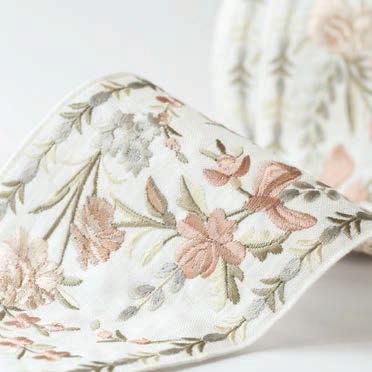




In this modern farmhouse, contemporary design meets comfort, resulting in an inviting home that caters to every facet of family life.
The sophisticated living room features a soft monochromatic scheme with luxury pieces from Baker and Hickory Chair upholstered in cozy textured fabrics. Custom-made Century credenzas frame the limestone fireplace, their unique stain color mirroring the natural beauty of the outdoors. Gold Visual Comfort lamps illuminate the artwork, casting a refined glow on the space.
This space masterfully unites elegance, comfort, and personal style into a cohesive and alluring abode.


to fulfill environments for today’s lifestyles.
DESIGNER: LIZ BASLER, CASTLE DESIGN
7707
314-727-6622
WWW.EMILYCASTLE.COM

Unless you’re a Major League Soccer aficionado, you may not know soccer fields are called pitches. I didn’t the first time I went to a St. Louis CITY SC match (and by the way, games are called matches) so now you’re already ahead of where I was just a year ago. Since then I have seen some games, fallen in love with our stadium, bought some CITY swag, regularly watch our team on AppleTV, and have started acting like a character on “Ted Lasso” every chance I get. If you’ve never been to a game, go before you can’t get a seat.
For anyone who wondered if soccer would take off in St. Louis, the proof is in the numbers. Every home game sold out in the first year and St. Louisans have caught on quickly. Just follow the crowd, inside or outside the stadium, and you’ll feel the electricity. Don’t plan on sitting; most fans stand the whole game!
But the team and its ownership aren’t resting on their laurels after a successful first year in terms of its winning season, the first time for a new team to make the playoffs, and a record number of fans. CITY SC is doubling down on its commitment to soccer in St. Louis and have announced plans to partner with American Family Insurance, the U.S. Soccer Foundation, and Musco Lighting (the club’s stadium lighting partner and creator of the Mini-Pitch System™) to install 11 mini-pitches across the region to provide safe places for kids to learn and play soccer.
If you have ever traveled to a country where soccer is a national pastime, you have certainly seen the range of pitches they play and practice on – from schoolyards, dirt fields, soccer parks with multiple
pitches, and, of course, some very large stadiums. Soccer is an addiction, so players will play wherever they can find a field and a goal.
According to CITY SC President and GM, Diego Gigliani, “The mini-pitch program is really just one example under the overarching vision and mission for the club, which has to do with the St. Louis community. And we keep on reinforcing that the club was founded to dream bigger than soccer. What that means is that the goal of the ownership group was always to have an impact, not just on the sport but also on the community, on the city, for it to be a catalyst for change and a representative of the future of St. Louis rather than the past. The phrase that we use a lot internally is that our goal is ‘to be an exceptional club and an exceptional neighbor.’ So there are many different ways in which we try to bring that to life.”
The club committed early on to a goal of making sure that the sport of soccer or football could be more accessible across the St. Louis region. That involved two things that have now come together. One is the CITY Futures program and the other is the mini-pitch program.
CITY Futures is a youth soccer initiative focused on the 7-to12 year old age group and on free football classes to kids across the St. Louis region with a special emphasis on those regions that today wouldn’t have access to free soccer.
“So CITY Futures has five outdoor locations where we coach kids and as of 2024, we will start adding some programming to the two mini-pitches that have been inaugurated,” Gigliani says. “That programming may be some CITY Futures coaching classes or maybe a street soccer tournament.”

 CITY CEO Carolyn Kindle and (far right) President and GM Diego Gigliani with executives of Liga MX at the July 27, 2023 Leagues Cup match against Club América
CITY CEO Carolyn Kindle and (far right) President and GM Diego Gigliani with executives of Liga MX at the July 27, 2023 Leagues Cup match against Club América

The mini-pitch program is a commitment made by CITY SC, American Family Insurance, U.S. Soccer Foundation, and Musco Lighting (the club’s stadium lighting partner and creator of the MiniPitch System™). The goal is for all 11 pitches to be installed and ready before the FIFA World Cup in 2026.
Two of the 11 mini-pitches were built and opened in 2023: the first in DeSoto Park, very close to the stadium, and the other in Fairmont City, Illinois. The third one is still under construction in Ferguson, MO.
So what’s the difference between a full-sized pitch and a minipitch? A regulation or full-sized pitch like the one at CITYPARK is between 110 and 120 yards long, and 70 to 80 yards wide, and accommodates 22 players and four officials. Typically, a player runs up to 10 miles per game on a field this size. The size of the mini-pitch is typically around 50 x 100 feet and is designed to be perfect for five or six-players-a-side. The mini-pitch resembles futsal, which is indoor soccer that accommodates five, six or seven players on each side. The benefits of a smaller pitch are multiple.
“One of them is just the ability to put them in more places,” Gigliani says. “Obviously putting a full-size soccer pitch is really difficult to do, especially if you want to locate it close to urban centers where you’ve got a lot of people. Unlike pickleball, which is relatively new, the concept of a small soccer pitch is not new at all. It is just there to encourage this kind of street football culture. That’s how some of the best soccer players in the history of the sport were made. These small pitches encourage a more technical way of playing


because you are trying to play soccer in a more limited space, which requires more dribbling and more passing rather than the more physical running of a big 11-a-side pitch.”
CITY SC hopes there will be some structured programming at the pitches such as leagues. But currently, they’re meant for unstructured play. The success of the mini-pitches will be measured on them being used and being well-received by the community. The more people that are playing, the better. Diego emphasizes, “The long-term desire for this would be for us to be able to point back to the role that these mini-pitches have played in developing future players who could eventually even go into the professional group. Obviously that would be an amazing proof of success if by having some of these pitches in a community that today doesn’t have it but has people who want to play, they can fall in love with the sport.
“This is for all ages to play there, but you can imagine young kids having a football pitch nearby when they have a park nearby and they just start to get more involved with the sport,” Diego adds. “And we think there’s a lot of potential in the city to produce top talent. So hopefully we’d be able to see five, 10 years from now some player who comes into our academy system. Our academy system doesn’t start until you’re 14 years old. Wouldn’t it be great if kids who started playing on some of those mini-pitches when they saw them open in their neighborhood? That would be an amazing long-term proof of success.”
When asked what kind of formal programming is planned, Diego says that some of it will be up to the community to take
CITY SC defender Kyle Herbert playing with a future star at Fairmont City MiniPitch, October 2023 CITY SC Midfielder Célio Pompeu playing with Fairmont City CITY Futures players at the Fairmont City Mini-Pitch Unveiling on October 26, 2023

ownership of those pitches. That is why CITY SC works closely with those communities to identify where to put them. “We want to put them someplace where the community wants them and then act on that and create some of their own programming. “But we will also support that with our CITY Futures programming. Obviously, the more kids that are playing at a younger age and the more that they’re playing and learning the right way of playing soccer, the better our talent pool will be at 13 or 14.”
CITY SC doesn’t currently plan on building any full-sized pitches. The mini-pitches have different size options when the club purchases them. One of the pitches that is being looked at in North City will be the largest mini-pitch possible. “So I don’t know how the adjective ‘mini’ will actually work for it, but it won’t be an 11-a-side pitch, Diego says. “It will still be smaller than a traditional soccer field.”
Since the launch of CITY SC , the ownership group has become the largest developer in the Downtown West area. Specifically, the parts that they control in the CITYPARK Stadium district are: the stadium itself, the training facility, and now the opening of their offices, SoMa House. This is the renovation of a building where over 100 people work every day. But beyond that, Diego adds “We’re excited that the stadium district has acted as a catalyst for investments into other real estate development projects. I think between what we have invested in the stadium district and other projects that have been announced since we were given the license for the MLS Club, there have been nearly a billion dollars worth of investment into this area including housing projects, restaurants, hotels, more retail and office

space. All of that is a really big measure of success. Hopefully, we will help to further develop the core of the city.”
Since I arrived in St. Louis in 1988, there has been talk of how to create a renaissance Downtown. Every other city surrounding us – such as Indianapolis, Nashville, and Austin – has a family or group of families that sponsor the growth. More than money, it takes selfless individuals with vision and the willingness to dream big. With the Taylors of Enterprise, Jim Kavanaugh of World Wide Technology, and others we have both the money and the vision. You can see the city change before your eyes, and before long, our kids will dominate the amateur and professional pitches worldwide. Thank you! St. Louis is indebted to you. sl
Diego Gigliani is originally from Argentina, was raised across the United States and Europe and spent the last 10 years with City Football Group, the largest global football organization in the world and the parent company of English Premier League powerhouse Manchester City FC. In his most recent role, Gigliani oversaw eight of City Football Group’s international football clubs, including all those in the European Union and Latin America covering markets such as Spain, Italy, France and Uruguay, to name a few. He sat on the Board of Directors of most of these clubs and worked directly with each club CEO and Sporting Director to set targets, provide direction, drive strategic projects, pursue synergies, and deliver results. Prior to the City Football Group, Gigliani spent 13 years in management consulting and completed his MBA at the Wharton School in the U.S.
CITY Futures Kickstart clinic at Forestwood Park in Ferguson CITY Futures Kickstart clinic at Forestwood Park in Ferguson




Few can argue with the fact that St. Louis’ talented designers rank among the best. In a free-standing November/December issue, Sophisticated Living St. Louis will be featuring the best of the best with the winners of the 2024 Sophisticated Living St. Louis Excellence in Design Awards.
l be tough. Entries will be made in just 16 categories and will be judged by nationally recognized authorities on design. Entry packets will go out
15, 2024. Entries will be accepted early; they won’t be accepted late. Finalists will be announced in September; the winners will receive their awards at a gala reception held at 21c in early November.









With her giant etching press and a healthy dose of alchemy, Master Printer Maryanne Ellison Simmons works with artists to bring new beauty to life.By Alexa Beattie / Photography by Carmen Troesser
It all starts with sunshine. It begins with raw material brought from a faraway place, cooked to a pulp in a vat, strained and laid out on boards to dry. The main ingredient of this particular paper may travel all the way from Thailand but it reaches its fullest potential in a sunny suburban garden somewhere in North County.
“Yes, the investment begins here,” says Maryanne Ellison Simmons, owner of St. Louis’ Wildwood Press. She’s smoothing her palm to the top sheet of a 6- by 4-foot stack. The sheets – once the interior bark of a mulberry tree – are raggedy at their edges, beautifully “stitched” in imperfection; as soft and pliable as summerweight cotton.
Wildwood, in operation since 1996, is a collaborative press. This means that Simmons, a Master Printer with the right tools (a behemoth 5- by10-foot etching press chief among them), teams with artists to “reimagine” their work. In those 27 years, she and 21 co-minded, bold Indeterminists have (in the name of art and the acceptance of printing’s rascally nature) willingly submitted to the edgy unknown.
“You never know what you’re going to get,” she says.
Making beauty is in Simmons’s bones. Like the paper she makes, she also “came to be” in natural light. It was a raggle-taggle childhood played out – from sun up to sun down – in the sylvan nooks of the (then) bucolic Detroit suburbs.
“We were a gang of three,” she says. “Me and my brothers in the fields and woods.”
Until it was time to come in for supper and their mother’s voice was cutting through the dusk, the outside world was her oyster. This artist – surely any artist – is all about possibility.
The orientation to beauty is also in her blood; the needle, in this family, always pointed there. Her father was an automotive engineer with a heart for pastel drawing; one of her two brothers – a design engineer who worked all over the world – began woodworking in resin in China where he was first inspired. He continues the practice in his retirement to this day, Simmons says.
Her mother, meanwhile, was more niche. Principally a ceramicist (but skilled as well in copper and enamel), she was a member of the Midwestern Egg Guild. And no ostrich egg, no goose or even quail egg was safe from her dentist’s tool, her jewels, or her sequins. By the time she died, eggs of inconceivably intricate design had squeezed the pots and pans from their cupboards and crowded the surfaces of the Mid-Century ranch house they lived in.
“It was a strange, secret society,” Simmons says, adding that her mother never sold a single one. But that wasn’t the point. She just had to do what she had to do.
“A fetish,” Simmons says.

“Alchemy,” is how this master printer describes the Wildwood process which can take years to complete and – like oven + baker = bread – can produce something greater than the sum of its parts.
For instance, when artist Valerie Hammond brought her wax-dipped transfers of the tiny, traced hands of her dying mother to the table, Simmons – using four full lithograph plates – rolled them to eight times their original dimension. The results – dark and inky, speckled, and embellished with flora – are huge, and heartbreakingly sublime.
Michele Oka Doner’s works also become more breathtaking than before. These imposing panels of seaweed and twisted roots of the banyan tree now reach almost floor to ceiling in Simmons’s lofty City Museum studio.
This isn’t where the alchemy actually takes place. (Her press, made locally by L.E. Sauer Machine Co., lives in South City). But it’s where two massive (11- by 5-foot), glitteringly white ‘flat files’ house the collaborative work she has done with those 21 artists since her press’s inception.
“I never throw anything away.” Simmons pulls things out of these drawers as though they were gossamer underclothes; carefully, carefully unwrapping their tissues to reveal – one after another after another – some shiveringly beautiful “slip” of art.
“I liken print-making to factory work,” she says (in an aboutturn). She means the physicality required, the muscle, the messy process of “slinging paint.” And she also may mean the grit needed to be present with dilemma and uncertain future. For, in this business, there may be no clearer example of art imitating life.
“This is not for the faint of heart,” Simmons says, talking about the moment (“of all moments”) when the machine is turned off and the paper is turned. “But it’s thrilling.”
Simmons and her husband, Ted, a former Cardinals player and member of the Baseball Hall of Fame, are both from Michigan. They met in junior high (he was her first ever date) and much later, with a common sensibility for beautiful things, began a life of collecting.
“We started with early American furniture and went from there,” she says.


 Simmons in her lofty City Museum studio in front of art by Michele Oka Doner.
Simmons in her lofty City Museum studio in front of art by Michele Oka Doner.

In 2020, the couple donated 833 pieces of art to the Saint Louis Art Museum, which then, in honor and celebration, held an exhibit. Catching the Moment presented 190 pieces of contemporary art collected by the couple, and did exactly that – captured a moment, opened a shutter on the pivotal historical moments in their lives: Vietnam, civil rights, gay rights, feminism and AIDS.
“We like art that has something to say,” Simmons says. “But it isn’t always pretty.”
The permanent Ted L. and Maryanne Ellison Simmons Collection – a dizzying assemblage of prints, collages, photographs and sculpture – could be seen as the Simmons’ own time capsule – art from days of their lives.
“This collection of works by so many politically engaged, contemporary artists significantly contribute to the Museum’s collection,” says Clare Kobasa, associate curator of prints, drawings and photographs. “It activates a lot of possibilities for us.”
Without a moment’s hesitation, Simmons says St. Louis is exceptional for being an affordable place for artists. Indeed, a studio like hers – four floors up in a staggering monument to creativity – would cost the earth anywhere else.
“And printers need space. When there’s a cumbersome press to house, size matters.”
Simmons double-majored in painting and printmaking at the University of Michigan, and went to Washington University for graduate school. She taught at that institution from 1996 to 2002.
She gestures around her studio which is a stunning gallery in its own right.
“My journey here was preordained,” she says. She’s thinking back on that childhood again – her playmates, her ‘building blocks’ of pebbles and stones; that classroom of light and air.
“I don’t think it could have been otherwise.” sl

The debut of La Fantaisie last summer in Paris' 9th arrondissement has created more buzz than a beehive.
Written by Bridget Williams / Photos by Jerome Galland, courtesy of La FantaisieI knew from social media clatter that travel influencers were agog about La Fantaisie (lafantaisie.com), which opened in Paris this past summer. Still, after walking from Gare Du Nord in a steady drizzle with luggage in tow, I was surprised to see a bevy of gendarmes stationed at the start of Rue Cadet, a few yards from the hotel's front door in the bustling Faubourg-Montmartre neighborhood. Following an awkward interaction that reminded me (once again) that I must acquire a basic level of conversational French, I learned that the crowd control wasn't for the hotel but rather security for French President Macron, who was attending an event next door.
No staff were stationed outside the hotel, but this slight was absolved as soon as I stepped inside this maximalist's dream. I
imagined that this would be the result if Wes Anderson and Iris Apfel collaborated on a hotel. The lobby and its cozy lounge, covered floor-to-ceiling in color and pattern, was slightly retro, very funky, and totally unique. I was instantly smitten.
And, as if I needed a reminder that this property was a complete departure from the rarefied air (some would say stuffiness) found in the upper echelons of Parisian hotels, the reception staff, whose ages appeared to bridge the era where Millennials end and Gen Z begins, boasted casual uniforms, a more 21st-century letme-know-what-you-need attitude, and spoke perfect English. Adding to the "cool kids" vibe was a fantastic playlist and a sprinkling of artfully dressed modelesque locals tucked into the lounge's corner banquettes conversing over an aperitif.
Yacht Club exterior


 The salon serves as an extension of Le Café.
The salon serves as an extension of Le Café.




 Bar Sur Le Toit
The garden outside Golden Poppy
Golden Poppy
Bar Sur Le Toit
The garden outside Golden Poppy
Golden Poppy

Rue Cadet draws its name from 16th-century gardeners, brothers Jacques and Jean, who owned the Clos Cadet and supplied the royal court with fruit and vegetables. At La Fantaisie, Swedish-born and London-based designer Martin Brudnizki pays homage to this history, with interiors given over to a rainbow of botanical motifs, a charming and unexpected "secret" garden in its "backyard," and a rooftop bar with a lushly landscaped terrace.
I enjoyed the sweet sound of bird song piped into the elevator—clad in green grasscloth wallpaper and antiqued mirrors— as I rode up to my room. The door slid open to reveal more color-on-pattern-on-texture, with bright green trim surrounding Fornasetti's iconic Chiavi Segrete wallpaper, in which dense foliage conceals golden skeleton keys. The color of each guestroom door evoked a sunshiny day.
Brudnizki, whose dossier includes the new Vesper Bar at The Dorchester in London and The Britely at Pendry West Hollywood in LA, certainly has a flair for the theatric, providing an Alice-InWonderland-worthy psychedelic dreamscape inside and out of La Fantaisie's 63 rooms and 10 suites. While the design of guestrooms is slightly less exuberant than that of its public spaces, there is no shortage of whimsy.
Mirroring the star power of its design, culinary luminary Dominique Crenn oversees Golden Poppy, La Fantaisie's flagship restaurant, which is a destination in its own right. French-born
Crenn, who has worked in the US since the 1980s and holds the distinction of becoming the first – and only – female chef to be awarded three Michelin stars in the States, has seized on her homecoming with great aplomb, creating a fine dining experience with a zero plastic and zero waste philosophy. Golden Poppy's interiors—a glass-roofed main dining room reminiscent of an antique greenhouse that offers direct access to a large walled garden—are apropos for Crenn's vegetable- and fish-forward menu, which brings a touch of California's multicultural cuisine, and a subtle spiciness that's hard to find in many Parisian fine dining experiences. I could have eaten a dozen of her mushroom tarts, but I was glad I didn't, so I had room to enjoy spicy fried rice noodles with seaweed wakame butter and smoked trout roe.
For its subterranean spa, La Fantaisie partnered with French brand Holidermie, which employs a unique, naturally vegan approach in its quest to offer effective, simple, and radiant beauty products.
Normally a 7th arrondissement gal when I am lucky enough to be visiting Paris, I appreciated the cute pocket-sized guide to the neighborhood left on my nightstand, which allowed my wandering to be a bit more purpose-driven than usual. La Fantaisie is located in a charming part of the city, full of intriguing passageways, magnificent architecture, and À la Mère de Famille, the oldest chocolatier in Paris. C'est si bon! sl

A new wine subscription service aims to create adventurous oenophiles through education and exclusive partnerships.Written by Claire Williams / Photography courtey of FlyWines
In 2020, while participating in a socially distanced wine tasting with a friend, Stephanie Franklin began tasting through bottles of her kit and thought, "Yikes, this is not good." As Franklin put down her glass, a question arose in her head: "Why can't I make a better version of this?" she thought. Feeling stagnant in her career, Franklin used the global pause provided by the pandemic to perform research, investigate the wine industry, and ponder her next move. Another attribute in her arsenal included the time she'd spent living in Europe, where she got to experience Old World wine culture firsthand. As a bonus, one of the first friends she made when moving to the Bay Area, Guiliano Manno, was a practicing sommelier and served as a sounding board for her ideas.
After her mother's sudden death in the same year, Franklin wanted to eliminate any "would've, could've, should've" in her life and finally lead a life of her own design rather than what others expected her to be. Leaving behind a lengthy career in technology, Franklin realized she could meld her prior experience and knowledge with her love of wine by creating a wine subscription service aimed at shaking up the market.
Franklin launched FlyWines (flywines.club) in late 2023. Aiming to be more than just a wine seller, Franklin is passionate about bringing undiscovered and underrepresented wine regions to the US market. To make this happen, Franklin traveled the world, visiting winemakers in person to discover wines missing from store shelves and create a connection with these wineries and winemakers that goes above just being a business partnership. As a Black woman in an industry historically dominated by men, she feels it's essential to have a diverse portfolio and tell stories that show the vastness of the wine industry and the passion that goes into those 750ml bottles sent to customers' doors.
Riding the learning curve in establishing her business has been eased somewhat by technology. However, Franklin emphasized that the time-honored tradition of building one-onone relationships is just as important as it was 50 years ago. For Franklin, most of the wineries she works with are generations in the making, and she wants to tell their stories with every pour. Through exclusive partnerships with winemakers in Turkey, Northern Italy, California, and soon Portugal, Georgia, Greece, and Morocco, Franklin has made significant inroads


in introducing these wines to an entirely new audience that wouldn't have been possible without her advocacy.
Franklin said one thing that differentiates FlyWines from other subscription services, outside of having access to their oneof-a-kind portfolio, is the option to sample before committing to a full order. You can refine your palette preferences while tasting through a four-bottle sample to successfully curate future purchases. Franklin's current model is two bottles a month, as she found other subscription services were overwhelming customers with too many bottles. However, depending on customer demands, her subscription boxes will eventually be expanded to four or six bottles a month.
Following a surge in wine sales during the pandemic, an inevitable correction has seen wine consumption decline in recent years, with a two-to-four percent drop in overall wine volume sales in 2023. The wine industry has the daunting task of capturing the attention and loyalty of an audience with so much to choose from and limited wine knowledge. Despite these challenges, the premium wine segment represents a bright spot as customers buy less but are willing to pay more for a high-quality bottle. Franklin's wine selections frequently fall into the high-end category and are intended for

consumers willing to spend more on experience and quality. Franklin singled out one of her selections, a Mosole Tai that she compared to a buttery chardonnay, which kept customers clamoring for more.
Franklin wants to contribute to a wine renaissance through various means of education. FlyWines will soon launch virtual tasting sessions for subscribers, allowing consumers to fully understand their palette and the wine they're tasting. Franklin says she wants "everyone to become their own sommelier" and get excited about expanding their wine knowledge. She is also investigating group events, such as corporate retreats with wine kits, to further her pursuit of wine education and expose customers to overlooked wonders of the wine world.
For many, wine tasting can seem daunting, with people seeing it as a test with hard and fast rules and right and wrong answers. Fearing a poor grade can make people afraid to switch lanes and veer away from what they know. FlyWines wants to be an option for people looking to be more adventurous from the comfort of their homes. Looking to the future, Franklin hopes her leap of faith into the world of wine will inspire others to take theirs with FlyWines and allow themselves to discover the joy of being a curious oenophile. sl





























through Reis-Nichols
Available


Ariella Chezar, an instructor and artistic director at FlowerSchool New York, shares how to harness the inherent drama of nature and alter a room’s energy through her artful floral arrangements.
Available March 5. Ariella Chezar with Julie Michaels—Home in Bloom: Lessons for Creating Floral Beauty in Every Room— hardcover, 256 pages, Ten Speed Press
In her first book, iconic multihyphenate Barbra Streisand reveals another aspect of her vast skillset by sharing a deeply personal look into the creation and construction of her newest residence, a “dream refuge” she’s pined for since the days when she shared a small Brooklyn apartment with her mother, brother, and grandparents. Barbra Streisand—My Passion for Design—hardcover, 288 pages, Viking Press


A peek inside 12 unique abodes, many never before published, home to artists, designers, photographers, musicians, and more, with a shared theme of creatively decorating. Available March 12. Anna Malmberg (photographer), Mari Strenghielm (stylist)—Creative Homes: Evocative, Eclectic & Carefully Curated Interiors—paper over board, 208 pages, Ryland, Peters & Small
When it came to the interior design of his homes, the late and legendary Karl Lagerfeld was as exacting and opinionated as he was renowned for when it came to both his personal appearance and prowess as a fashion designer. The included homes are documented by date, beginning in the 1960s through his final home purchase in 2009. Patrick Mauriès, Marie Kalt—Karl Lagerfeld: A Life in Houses— hardcover, 240 pages, image courtesy of Thames and Hudson.

A beautifully illustrated survey of the awardwinning Sydney-based design practice Arent & Pyke founded in 2007 encompassing interior architecture and design with a unique focus on decorative arts. Available March 9. Juliette Arent & Sarah-Jane Pyke— Arent & Pyke: Interiors beyond the primary palette—hardcover, 304 pages, image courtesy of Thames and Hudson.
A complete and official retrospective of celebrated fashion designer Jil Sander, beginning in the 1960s, created in collaboration with leading book designer Irma Boom and Sander. Available March 25. Irma Boom (design) & Ingeborg Harms (text)—Jil Sander By Jil Sander—hardcover, 320 pages, Prestel
Certified nutritionists Tamara Green and Sarah Grossman provide information and recipes to help you boost your mood through food. Available March 26. Tamara Green & Sarah Grossman—Good Food, Good Mood: 100 Nourishing Recipes to Support Mind and Body Wellness— hardcover, 248 pages, Appetite by Random House




Home gardener, baker, entrepreneur, and awardwinning cookbook author Rosie Daykin shares how she designed and nurtured her Vancouver garden and recipes highlighting freshly harvested produce. Available April 9. Rosie Daykin—The Side Gardener: Recipes & Notes from My Garden—hardcover, 288 pages, Appetite by Random House
Supermodel, philanthropist, and wellness advocate Gisele Bündchen shares 100 tasty and approachable recipes based on everyday ingredients and guidance on creating a daily routine filled with positive intention and gratitude. Available March 26, Gisele Bündchen—Nourish: Simple Recipes to Empower Your Body and Feed Your Soul— hardcover, 256 pages, Clarkson Potter
Organized seasonally, you'll find recipes to make the most of your farmers' market or neighborhood foraging haul, along with tips for harvesting ingredients, preserving, fermenting, and mindfulness activities. Available March 5. Ashley Rodriguez—Rooted Kitchen: Seasonal Recipes, Stories and Ways to Connect with the Natural World, hardcover, 272 pages, Clarkson Potter

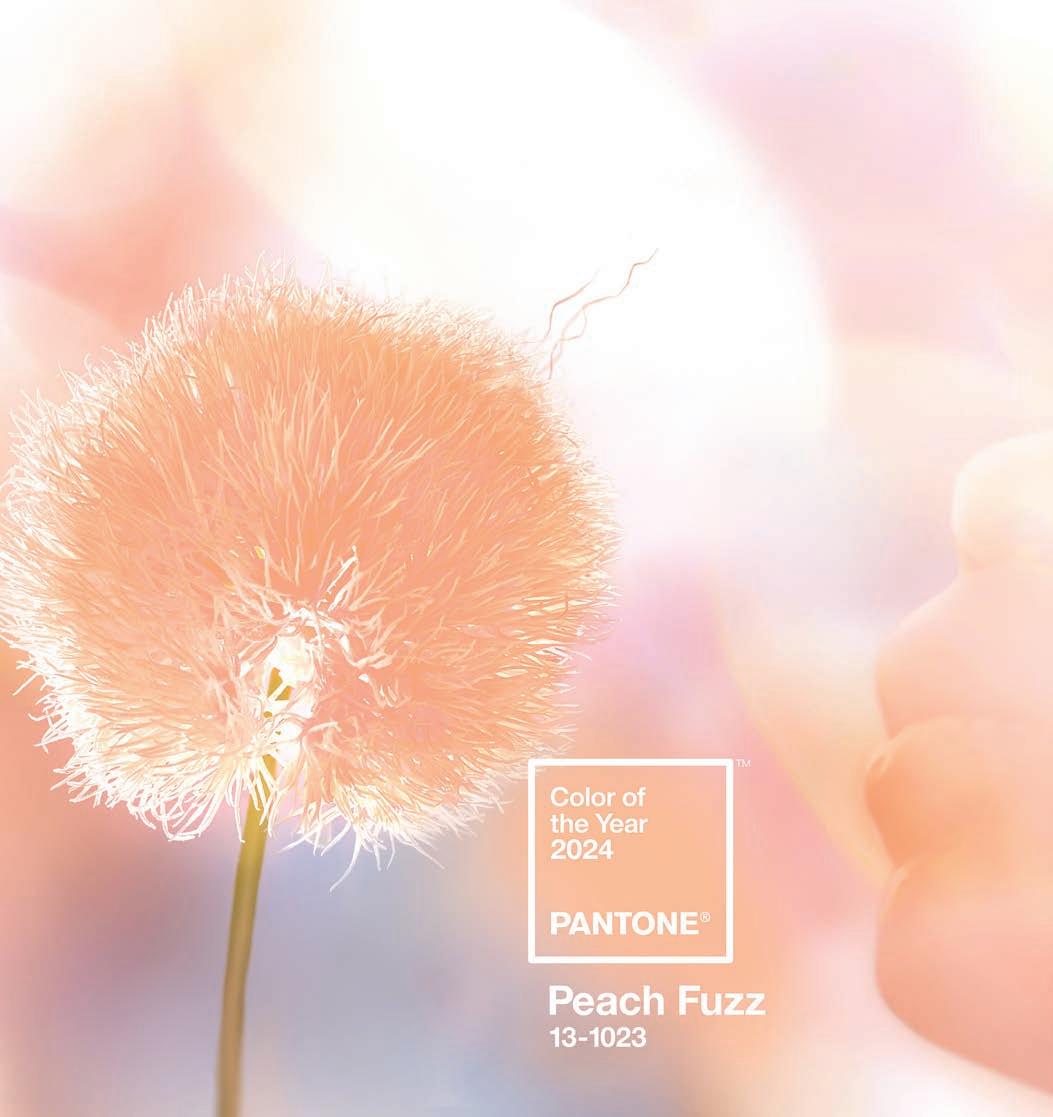
“A cozy peach hue softly nestled between pink and orange, PANTONE 13-1023 Peach Fuzz brings belonging, inspires recalibration, and an opportunity for nurturing, conjuring up an air of calm, offering us a space to be, feel, and heal and to flourish from whether spending time with others or taking the time to enjoy a moment by ourselves,” says Leatrice Eiseman, Executive Director, Pantone Color Institute. “Drawing comfort from PANTONE 13-1023 Peach Fuzz, we can find peace from within, impacting our wellbeing. An idea as much as a feeling, PANTONE 13-1023 Peach Fuzz awakens our senses to the comforting presence of tactility and cocooned warmth.”
The introduction of PANTONE 13-1023 Peach Fuzz also marks the 25th anniversary of the Pantone Color of the Year
program. First introduced by the Pantone Color Institute in 1999 with the Pantone Color of the Year, PANTONE 15-4020 Cerulean Blue, the Pantone Color of the Year captures the global zeitgeist, serving as an expression of a mood and an attitude on the part of the consumer.
“In the spirit of PANTONE 13-1023 Peach Fuzz, we reflect on the last 25 years of the Pantone Color of the Year program, grateful to provide an avenue where designers and color enthusiasts all over the world can engage in a conversation about color, be inspired by color and showcase their creativity within their communities. We look forward to continuing this for many more years,” said Laurie Pressman, Vice President of the Pantone Color Institute. sl



 Essential Home + Karim Rashid Klaude sofas, Karlotta Stool, and Craig center table (essentialhome.eu)
Piastrelle Tbrick
Fermob Luxembourg garden furniture (fermobusa.com)
Essential Home + Karim Rashid Klaude sofas, Karlotta Stool, and Craig center table (essentialhome.eu)
Piastrelle Tbrick
Fermob Luxembourg garden furniture (fermobusa.com)

















On a recent winter night in Ireland's County Mayo at Squire Danagher's Cottage, the original house where scenes from 'The Quiet Man' with John Wayne and Maureen O'Hara were filmed in the 1950s, we feasted on a traditional Irish dinner comprised of slow-cooked stew and potatoes (with a few glasses of champagne and seasonal canapes added to the mix). We capped off the private dining experience at this Ashford Castle outpost by gathering around the fireplace and sipping warmed whiskey while enjoying traditional music and a demonstration of Irish dance by employees who are part of a local dance school. Much like Wayne's character of Sean Thorton, I felt right at home.
Ireland has always evoked feelings of home for me. I know
I'm not alone, with nearly ten percent of the United States population reporting Irish ancestry. In my case, it's Éire's rolling hills, rugged landscape, and picturesque villages dotting the countryside that stir up something deep inside, making even first-timers feel a sense of déjà vu.
At Ashford Castle, it's the Irish themselves who feel the tug on their heartstrings as second and third generations of families, from guests to employees, have continued to return to the storied estate, spanning 350 acres of gardens, woodland along the shores of Lough Corrib, the largest lake within the Republic of Ireland. The manicured grounds provide for an array of activities ranging from country classics, such as horse riding, shooting, falconry, and fishing, to modern favorites, such as golf and biking.




Vaster than its setting is Ashford Castle's nearly 800-year history. Built in 1228 as a medieval fortress, it was passed among noble owners, most notably the Guinness family, who fashioned it into a "grand retreat" to impress well-to-do guests. Following centuries of additions, expansions, and owners, Ashford Castle joined the Red Carnation Hotels family in 2013. The Tollman family's ardent affinity for the property ushered in a massive multi-million-dollar renovation that breathed new life into the castle and reestablished its pre-eminence among the world's luxury hotels.
A symbol of the Tollman's sweet spot for Ashford Castle is delivered at check-in: a chocolate Irish wolfhound crafted by director of chocolate and patisserie Paula Stakelum, lovingly named 'Stanley' after the late Stanley Tollman. When he died at 91 in 2021, Niall Gibbons, head of Tourism Ireland, wrote, "The investment of Red Carnation Hotels into Ashford Castle ... and the consequential impact on rural Ireland cannot be overstated."


Entering the hallowed halls at Ashford Castle feels a bit like emerging from a time capsule. Still, the castle's contemporary grandeur is something even former esteemed guest George V would revel in, from the castle's 83 rooms, each uniquely designed (but always equipped with a pair of Hunter boots and a tartan jacket for the weather) to the myriad of amenities and experiences that make every stay different than the last. Ashford exquisitely balances the royal experience with humble pleasures, allowing guests to experience Ireland's history and culture but at an elevated level.
A pinnacle experience for guests who are keen to sample an afternoon of royal rural idyll in the Irish countryside, Ashford's School of Falconry, the country’s oldest, offers a "Hawk Walk". As you stroll the estate grounds, a pair of feathered friends follow along and deftly swoop onto your gloved hand for a quick bite.
Suppose you're more inclined to fur than feathers. In that case, you can walk through the woodlands with a member of Ashford's
Prince of Wales Bar The three-dimensional mosaic installation in the spa pool was designed by by South African ceramic artist Jane du Rand. The Connaught Room serves afternoon tea and views of the castle’s manicured gradens and Lough Corrib.
pack of canine companions: two Irish wolfhounds, an Irish setter, and a black lab (who guided the way with his favorite slipper in mouth). While our guide frequently stopped for photo ops and Q&A, my favorite moment was when he asked us to share a picture of our dog with the group and the collective "oohs and ahhs" that followed with each person's slideshow of their favorite pup.
Sitting at the apex of our afternoon activities was a round of clay shooting, and leading up to the excursion, I fretted that it would be a frustratingly fruitless pursuit. However, our patient and knowledgeable instructors made us such good shots that even the noblemen who roamed the grounds centuries ago would've been impressed.
Whether you're looking to unwind after a day of excitement or indulge in a self-care day, Ashford's award-winning Spa offers a comprehensive menu of treatments alongside impressive facilities encompassing a luminous relaxation pool, a hammam, a steam room, and a state-of-the-art fitness suite. Just recently opened on
the Ashford estate is Éalú (an Irish word for 'escape'), a leisure and wellness facility with a suite of fitness facilities, classes, and one-on-one personal training sessions. Floor-to-ceiling windows in the pool pavilion illuminate the 15m pool, jacuzzi, splash pool, sauna, and essence-infused steam room.
I'd argue that one of Ashford's most impressive feats is reinventing what the world thinks of Irish food. Executive Head Chef Liam Finnegan's extensive 23-year career has led him to his Ashford, where his philosophy is keeping things simple but sourcing the best possible ingredients and executing every dish to perfection.
With their original kitchen gardens used during the Guinness era restored to their former glory by head gardener Alex Lavarde and his team, Ashford harvests seasonal ingredients and looks for every possible way to be more eco-friendly, such as using certain flowers as natural pesticides and working with as many local and organic food suppliers as possible.

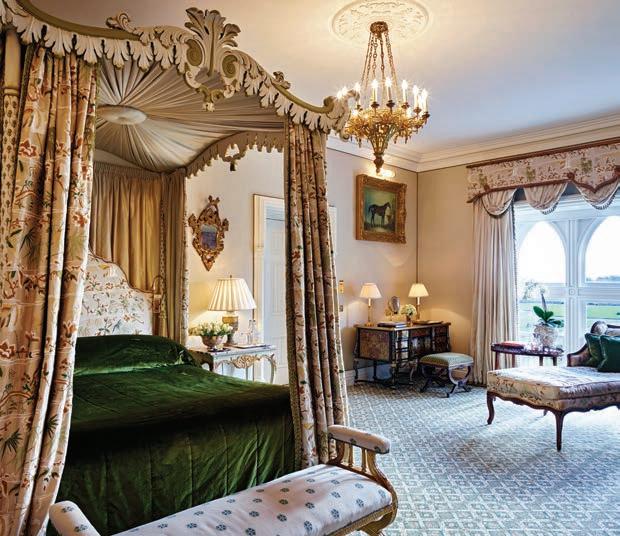
 Junior Stateroom #326
Hideaway Cottage bedroom
Junior Stateroom #326
Hideaway Cottage bedroom

Visiting the gardens, we crafted our dinner menu by pulling up carrots and cutting celery stalks. At the same time, Lavarde walked us through their future plans, including truffle propagated trees and growing willow to make handmade baskets, to name a few. Our dinner prepared later that day at Stanley's (patriarch Stanley Tollman's casual diner where he'd watch his beloved rugby matches) was entirely crafted by Finnegan with our ingredients foraged hours prior.
Whether it's afternoon tea in the Connaught Room, with excellent recommendations from tea master Thomas and unique blends only found at Ashford created using herbs sourced on the estate, to fine dining in the George V dining room, where the Royal Ossetra Caviar and Martin Jenning's 28-day dry-aged short rib were just as excellent as the wine pairings compiled by resident sommelier Paul Fogerty, there are endless opportunities to discover the seasonal and local ingredients of Ireland with food that warms the soul.
Today, the self-named 'characters of the castle' are as constitutive as the ancient stone walls within which they work their magic. Following our first night, I was excited to see the staff's familiar faces, from Robert Bowe, the restaurant and wine program manager who cheerfully greeted us before each meal, to a colorful cast of characters who were happy to engage in quick
quips and stories of the castle while delivering exceptional service. The rapport between guests and staff is one of the many aspects that makes Ashford so endearing. When every staff member addressed me by name, I felt just as vaunted as Aileen, Maureen, and Oonagh, the daughters of Ernest Guinness, dubbed the "Golden Guinness Girls" and darlings of 1920s British society who used to grace the halls of the castle.
While taking a nightcap in the Drawing Room, Ashford's lounge singer, Annette Griffith, took care to tour the room and greet familiar faces. It was a testament to her longevity at Ashford and guests' desire to keep coming back.
Our dinner at Squire Danagher's Cottage culminated with a classic apple pie; despite its humble reputation, the dessert became the talk of the trip, with the staff gifting us the coveted recipe as part of our turn-down service on the final night, proving not only the food was unforgettable (that was the topic of conversation over several days), but also that the staff takes a particular interest in the guests, and in this case handcrafting a small recipe booklet to bring home with us. Throughout its storied history, Ashford Castle served as a haven for the aristocrats who frequented it. Today, the Tollman family has ensured its legacy as a welcome and luxurious travelers' respite and symbol of Ireland for generations to come. sl
Cronan and Garvan, Ashford Castle’s resident Irish Wolfhounds.
 Compiled by Bridget Williams
Compiled by Bridget Williams




















A
Praga is likely the oldest car brand you've never heard of. Founded in the late 1800s as a manufacturer of heavy industrial machinery, it moved into vehicle production in 1907 with its two-cylinder Praga Charon. In the following decades, Praga moved into producing motorcycles, trucks, farm equipment, single-engine aircraft, military vehicles and machinery, enduro bikes, and race cars. The company recently reached a performance pinnacle when it announced that its first road-legal hypercar—the Praga Bohema—commenced production in a dedicated facility in the Czech Republic.
The Praga Bohema, first revealed in prototype form in late2022, will be hand-built in very limited numbers over the next four years. The company says it could well be the last all-new gas-powered hypercar. With a carbon fiber monocoque and body weighing less than 2,204 pounds and boasting 700bhp at 6,800 rpm and a top speed of just over 186mph, the mid-engine aerodriven two-seater will be a dramatic addition to hypercar collectors' garages. The company said in a launch press release that in the right hands, the two-seater "is capable of extreme high performance on
track targeting GT3 race car lap times on its semi-slick Pirellis." When not traveling at breakneck speed, extreme rubbernecking is guaranteed during off-track road driving.
Praga says the inspiration for Bohema came from longstanding Praga pal and former F1 and current IndyCar driver Romain Grosjean, who challenged the company to deliver an uncompromised two-person road/track performance car, a rare creature that you can drive to the track, pull on a crash helmet (taken from the bespoke luggage fitted in each of the car's 13.2 gallon side pods), put in lap after lap at high speed on its Pirelli Trofeo R tires, and then drive home again. "On the road, you get a smooth ride, the car eliminates the bumps, you can chat with the passenger, and everything is calm and OK," said Grosjean. "Then simply switch focus, and you are on the track. The same clothes, the same car, but the feeling changes, and you are pushing the limit and collecting amazing lap times again and again."
Although race-bred, the Bohema doesn't skimp on comfort and bespoke functionality, with a hand-assembled and hand-stitched


interior comprising carbon fiber, Alcantara and leather that can comfortably accommodate two 6.5-feet-tall adults. The narrow cockpit boasts a fully adjustable driver's seat, steering column, and pedal box. The custom steering wheel, which incorporates a sizeable digital display, is removable for easy entry and exit. The slim center console, launch control, built-in fire extinguisher trigger, and electronic parking brake are located within the slim center console. Hearkening to Praga's aviation division, the airconditioning controls are mounted in a 'fighter jet' style roof console.
First customers of the $1.5m road-legal hypercar were recently invited to visit Praga's bespoke assembly facility to see the handbuilding process and experience the final production specification Bohema on its standard Pirelli Trofeo R tires on icy Czech roads, ahead of its public reveal scheduled for later this spring.
The first customer Bohema handover will occur in Europe in the first half of 2024, with that particular hypercar featuring a unique specification to celebrate the occasion. Customer handovers are also planned in the UAE and USA in 2024, with Praga scheduling Bohema

production into 2025. Limited test drive opportunities in Europe and the UK will begin this spring before Praga activates its North American and Middle East Bohema launch programs later this year.
Bohema production follows the completion of Praga's intensive on-road pre-production development and on-track ride-and-drive test programs occurring throughout 2023 at locations including Spa-Francorchamps, the Red Bull Ring, and Nürburgring. Praga says they sourced advice and performance expertise from some of the world's best drivers on road and track, including F1 and IndyCar driver Romain Grosjean, former "Stig" of BBC's Top Gear, and Praga's Chief Test Driver Ben Collins, and experienced GT racer, Josef Kral.
"This is an important milestone for Praga in our long 117-year history," remarked Tomas Kasparek, owner of Praga Cars. "We're especially proud to be commencing production only one year after revealing the Bohema prototype. We are monitoring every stage of the build process very closely to make sure that the Bohema production car matches, and even exceeds our customers' expectations." sl

While it's often said that "money can't buy happiness," I'd argue that a stay at Camp Sarika by Amangiri most certainly can. Having spent several days before our arrival exploring the natural wonders of the Grand Circle region, I was absolutely giddy with excitement en route from the Page (AZ) Municipal Airport to the 920-acre resort, surrounded by five national parks, several national monuments, and the Navajo Nation, the largest Native American reservation in the United States.
Anyone with deep enough pockets can construct a jawdropping luxury resort, and there has certainly been no shortage of such properties featured on the pages of this magazine over the past two decades. What truly distinguishes Camp Sarika and Amangiri is how its physical structures are nearly indiscernible from the landscape in the protected valley in which it's nestled, dwarfed by lofty flattopped mesa rock formations carved over millennia through the random interplay of water and wind. It's also the way the property touches on all the senses as an homage to Native American culture and the desert's desolate beauty, from the subtle scent of sage to the
sound of wood "popping" in the fireplace, the fabric hand of a wool blanket emblazoned with Navajo motifs, to the constant interplay of sunlight and shadow on the built environment and the mesa.
A short and scenic hike (or golf cart shuttle) from the amenities available at Amangiri, Camp Sarika's ten tented pavilions are scattered among 55 acres. The concrete composition of the main pavilion, comprising the lobby, restaurant, and spa/pool buildings, and their minimalist interiors—punctuated by iconography representative of the local landscape and culture—convey the iconic design of its sister property.
After completing the check-in process, the smell of onions, garlic, and butter cooking drew us into Camp Sarika's all-day restaurant, where we chatted up the chef about what he was making with the divine combination, destined for that evening's dinner tasting menu, which changes daily. A trail leads from the restaurant's terrace to a natural amphitheater: a rock alcove at the base of a 600-feet mesa large enough to have once hosted a private performance by Dave Matthews.


Unlike any other "tent" you've likely slept in, there isn't a single sleeping bag or air mattress in sight at Camp Sarika. With a minimum of 1,900 square feet inside and 764 square feet of terrace around a private plunge pool, each of the 10 one- and twobedroom pavilions offers a feeling of spaciousness that mirrors the expansiveness of their surroundings (Camp Sarika's name comes from the Sanskrit word for 'open space' and 'sky').
Designed to weather the full spectrum of desert weather that can span temperatures from 20° to 105° F, the sand-colored tents are strategically spread out along a single paved road that snakes along the base of the copper-colored sandstone mesa, so no one could hear me exclaim "can you believe this place?!" as I moved from roomto-room, marveling at the chic interiors, sprinkled with myriad influences, from campaign to contemporary, and encompassing furnishings that are both bespoke and sourced from brands including Nanimarquina, Annie Selke, Christian Liaigre, Marset, and Dedon. The sprawling bath included a walk-in closet, indoor and outdoor showers, a mesa-facing soaking tub in front of a floor-to-ceiling window, and luxurious Aman-branded toiletries.
A Douglas Fir sliding door in the dining area grants access to the covered terrace, a heated plunge pool, and an array of comfortable loungers. Outside the sheltering embrace of the extended canvas overhang is a firepit encircled by chic safari-style leather and canvas chairs with a warm blanket neatly folded on each seat.
Even with scores of natural wonders within easy reach, Camp Sarika and the additional amenities offered at Amangiri and available to Camp Sarika guests are ample enough to amply fill out the itinerary of even the most type-A vacationers.
Following a seasonally-inspired breakfast, you can head to Amangiri for a complimentary morning fitness class in their superbly equipped gym, part of a sprawling 25,000-square-foot spa complex. Set off for a hike on 12 miles of well-marked on-property trails, or let a horse, e-bike, or UTV do the work while you enjoy the scenery. Challenge your fear of heights and relish in the adrenaline rush of completing one of several guided Via Ferrata routes, in which a series of cables and ladder rungs fixed to the rock face allow you to literally ascend to new heights. Those who opt for the "Hoodoo" route can traverse an 18-inch wide, 270-foot-long suspension bridge spanning a 400-foot deep gorge. Any angst felt while ascending is worth it for the jaw-dropping views at the top (not to mention the sense of accomplishment you'll feel!).
Reward all that effort with a spa treatment, either at Amangiri or in a pair of spa suites adjacent to Camp Sarika's pool. The latter delivers a complete menu of therapies inspired by traditional Navajo wellness practices and incorporates Aman's superbly scented products. With Sandalwood, jasmine, amber, and rose notes, the Grounding line is a personal favorite and can now be purchased online to impart a little spa experience to your daily beauty ritual.





 Crossing a 232-foot-long suspension bridge spanning a 600-foot deep gorge as part of an on-site Via Ferrata excursion.
Crossing a 232-foot-long suspension bridge spanning a 600-foot deep gorge as part of an on-site Via Ferrata excursion.


In partnership with the Navajo Nation, the resort provides daily programming highlighting aspects of Navajo culture, from dancing and music to storytelling, weaving, jewelry making, and the history of Navajo Code Talkers. Distinguished by petroglyphs and recognized as a significant archaeological site where 6,000-yearold artifacts have been unearthed, Broken Arrow Cave, a short hike from the resort (and enterable with a guide), is where, from August through October, German artist-in-residence Ulrike Arnold creates unique paintings with natural materials procured on site for guests to observe the process. At day's end, marveling at an infinite sky packed with stars is the perfect nightcap.
Suppose you do want to head off property. In that case, the concierge can arrange for scores of over-the-top experiences, such as landing via helicopter atop Lake Powell's Tower Butte for a private yoga class or visiting remote backcountry geological wonders with a Navajo guide. The available adventures here are as big as your imagination.
Meals and non-alcoholic beverages are included in the nightly room rate. Camp Sarika's restaurant, open only to Camp guests for breakfast and lunch and to Amangiri guests with a reservation at dinner, serves flavorful Southwestern-inspired cuisine highlighting local and seasonal produce. Their lineup of

wellness mocktails are as exciting and beautifully presented as their boozy brethren. While I wanted to avail ourselves of the nearly banquet-sized dining table in our tent by enjoying an in-villa dinner, we so enjoyed conversing with the restaurant staff, who hail from all corners of the globe, that it never happened. A testament to the staff's attentiveness, during breakfast our first morning, I mentioned that my sinuses were suffering in the desert air, and by the time we returned to our tent, a humidifier was up and running.
Several unique al fresco spots on the property can host parties or dinners from four to 60. Offering a dramatic setting with floor-to-ceiling windows that frame the view across the plains, be sure to time your visit to Amangiri Restaurant with the sunset. The open-plan kitchen with a wood-fired oven supports a menu deeply influenced by Native American cuisine, the pinnacle of which is the four-course 'Spirit of the Journey' tasting menu that pays homage to the region's five tribes.
The Navajo proverb, be still, and the earth will speak to you, resonates at both Camp Sarika and Amangiri, where the built environment plays second fiddle to their majestic surroundings and embrace of Navajo culture, reminding guests luxury can lie in the embrace of simplicity and moments of quiet solitude. sl
Firepit outside Camp Sarika Tent 10
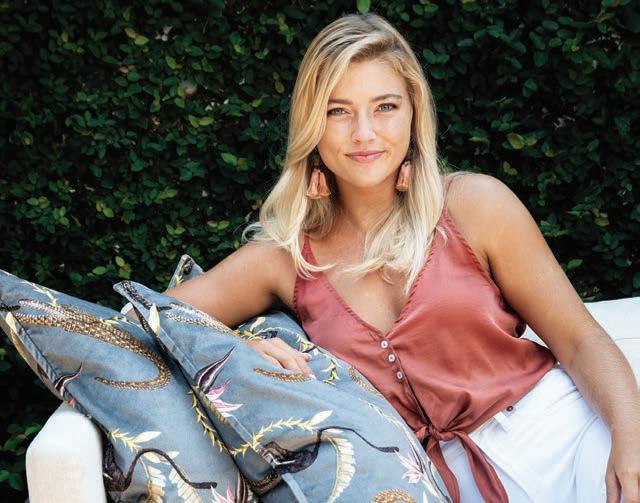




Swiss winemakers produce approximately 26 million barrels annually but export less than 2 percent. Until now, it couldn’t be bought in St. Louis.By Christy Marshall / Photography by Carmen Troesser
Virginia (known by all as Ginny) Busch started traveling to Lucerne, Switzerland when she was a child. Her grandfather, August Busch Jr., had met his third wife, Trudy Buholzer, there while dining at the Buholzer’s family restaurant, The Old Swiss House. Ginny’s father, August Busch III, then CEO of AnheuserBusch, had become fast friends with Trudy’s brother and proprietor of the restaurant, Willie.
“We would go to Switzerland every summer,” Ginny says. “We’d go to Europe, and we’d base out of Zurich for about four or five days while my father would fly to London, Italy, and Ireland to conduct business. But then he would take about four or five days and we’d vacation in Lucerne. That’s how we grew up, going to Switzerland and having a lovely time. It became one of my favorite places.”
So, in 2007 when she and her fiancé, orthopedic surgeon Dr. Chris Kostman, were deciding where to wed, she suggested Switzerland. He had never been there.
“He fell in love with it,” Ginny says, adding “We’ve kept the tradition up by taking our kids there, seeing the cousins, and going to the Old Swiss House.”
A graduate of Washington University and a longtime conservationist, Ginny went to work first for Busch Entertainment’s SeaWorld and Busch Gardens adventure parks as Director of Corporate Conservation Programs. After she had been there for a decade and after InBev bought A-B, she left and in 2010, took over as Executive Director of the Endangered Wolf Center in Eureka.
“I loved working there,” she says. “We went from a staff of nine to a staff of 25 and grew the organization to the point that we were more solid financially. We had a great team and tried to instill a positive passion for wolves.”
Throughout, she was still trekking to the Alps and imbibing in the wine. “A couple of years ago, I thought ‘How do I personally get this?’ I started googling Swiss wine and I couldn’t find it anywhere. And if I did, it was really difficult to get.”

The problem is although the Swiss produce wine, they also drink pretty much all of it.
“[The winemakers] don’t have a problem selling most, or all, of their wine in Switzerland so many never consider exportation,” Ginny says. “But the winemakers are passionate about their trade and many want to start showcasing it to different parts of the world.”
So, Busch started contacting and visiting winemakers with biodynamic and sustainably grown vineyards who were interested in exporting. She also created BK Varietals, an importation company, to help them with paperwork, permits, the logistics, and legalities.
“That was kind of the genesis about bringing this wine to the U.S. because it’s just so fun to introduce these lovely products that are of such quality,” Ginny says. “It’s a great product that is rarely exported, but it also speaks to me in the sustainability and environmental way that I wanted. When you can find a winemaker or a farmer who is producing their product in a way that is not only sustainable but healthy for you, that refuels the soil, and isn’t creating a huge footprint, all that just makes sense to me.”
But to succeed, the company must have some volume and some of the winemakers “only produce 25,000 bottles total a year,” Ginny says. “They’re not huge wine producers. And so it was, ‘Okay, what do we do?’”
The answer was to found Prost, a members-only club. By joining, a member then has access to purchase the featured Swiss wines. Memberships start at $500 and run to $1,250 annually. The level dictates how many bottles of wine each member can buy. Specifically: at $500, it’s 12 bottles; $750: 18 bottles; $1,000: 24 bottles, and $1,250: 30 bottles. Also included in the tab are tastings and events and limited super-premium wines at the top two membership levels. The number of members is currently topped off at 100.
“The membership is a way to not just create a community, but to regulate the number of bottles that a member can buy so that the wine is accessible to many,” Ginny says. “There are wine enthusiasts out there who come and taste and say, ‘I want four cases of this.’ Well, I may only have four cases total. So [the membership] is a way to say, ‘Okay, no.’ We’re going to sort of equalize how people get their wine
Ginny Busch, at home with her Swiss wines and Stout, her rescue Mastiff.
so every member can experience Swiss wine.” The wine prices start at $35 a bottle and run up to $150; the average is $65 a bottle.
Busch explains that the Swiss wine is generally more expensive than its French and Italian counterparts “because they don’t produce a lot of it. How they cultivate it and pick the grapes is all manual because it’s on these steep slopes and they can’t use machinery. All that cost adds up. That’s part of the reason for having the membership is that you get access to wine that you simply cannot buy anywhere else. And, if you could possibly get it, you will pay a ton in shipping to get it here.”
One of the most appealing aspects of Swiss wine is its lightness and its lack of aftereffects.
“Everybody has loved the wine,” Ginny says exuberantly. “It wasn’t just in my head and it wasn’t just me. Because part of the whole reason that I love Swiss wine is that it doesn’t give me a headache.”
If you were going to pick anyone to taste test your wines, Ginny Busch would be the ideal candidate. As is the Busch family tradition, she was given a few drops of beer upon her birth. When
she was growing up, her father would sample beers nightly at their farm and when she and her brother were of age, they joined in.
“Whether it’s a good thing or a bad thing, I inherited that tasting ability from my father,” she says. “And, we often get ‘head feel.’” She explains that after one simple sip, you can get a headache. “It’s a very quick reaction to whatever’s in the product. It could be the water. There are certain bottled waters where I get it. There’s wine, beer, some food additives. That trait was valuable for Anheuser-Busch because [August Busch III] got it as well. He would take one sip and go, ‘Nope, there’s “head feel” in this beer. Let’s find out why and eliminate it.’”
There is another reason Ginny Busch markets Swiss wines. She’s hoping aficionados decide to personally visit the winemakers in Switzerland.
“The thing that I’m passionate about is storytelling and really telling the story of each of those winemakers, of how the wine is made, and how it can fit into your everyday life,” she says. “I really hope it inspires people to go visit them.” sl



Capturing unique, one of a kind portraits and videos for over 15 years.
Capturing unique, one of a kind portraits and videos for over 15 years.
Family • Corporate • Custom Headshots • Commercials • Weddings + Events and more!
Family • Corporate • Custom Headshots • Commercials • Weddings + Events and more!
www.JohnLore.com 636.898.9086
www.JohnLore.com 636.898.9086
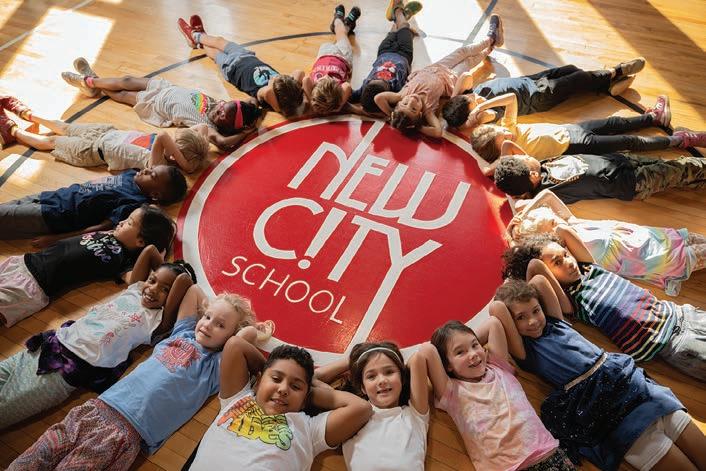

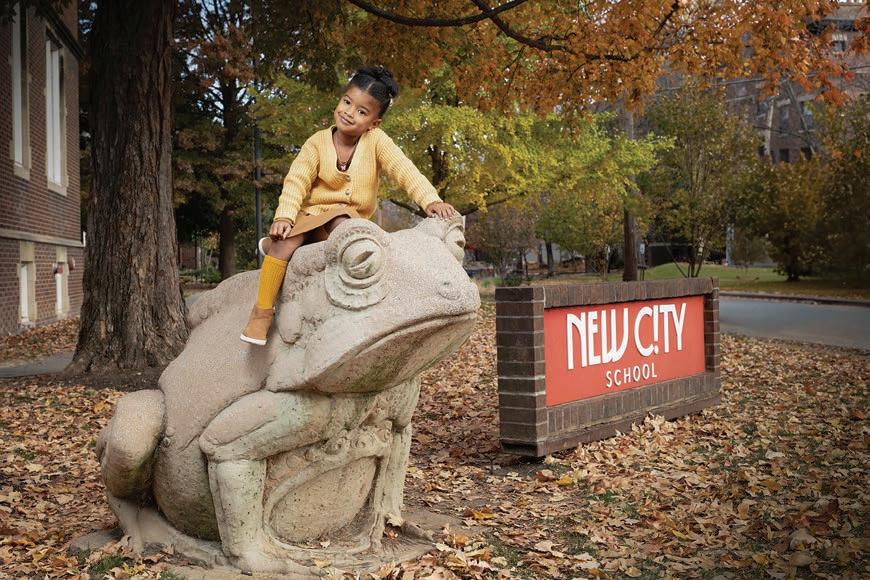





 Clockwise from top le : Saint Louis Closet Co. oor-based, adjustable closet shelving with a built-in co ee bar and drop zone; White butler’s pantry and bar closet with pull-out tray shelves for entertaining and cabinets for small appliances; Adjustable pantry shelving behind custom Stone Hall Cabinetry pantry doors mounted to the walls (looks like an extension of cabinetry when doors are closed); Wine cellar storage with pull-out chrome wine racks and cabinetry for wine glasses. Call Saint Louis Closet Co. at 314-781-9000 to update your Kitchen Pantry.
Clockwise from top le : Saint Louis Closet Co. oor-based, adjustable closet shelving with a built-in co ee bar and drop zone; White butler’s pantry and bar closet with pull-out tray shelves for entertaining and cabinets for small appliances; Adjustable pantry shelving behind custom Stone Hall Cabinetry pantry doors mounted to the walls (looks like an extension of cabinetry when doors are closed); Wine cellar storage with pull-out chrome wine racks and cabinetry for wine glasses. Call Saint Louis Closet Co. at 314-781-9000 to update your Kitchen Pantry.


In the Victorian-era people knew how to make a park. St. Louis was lucky to have its two largest parks founded during that time:
Tower Grove Park in 1868 and Forest Park in 1876. Both have grand sweeping thoroughfares and easy to navigate footpaths.
Tower Grove Park is punctuated with beautiful pavilions including the memorable Turkish Pavilion with its red-and-white circus tent stripes. Forest Park has beautiful footbridges, and of course, the Grand Basin, the fountain at the foot of Art Hill that is as quintessential a view in St. Louis as the Arch.
Between them, the two parks have more than 300 years of history, but don’t feel stuffy. Instead, they keep evolving to serve St. Louis.
“Forest Park has always been important to St. Louis, but our nonprofit’s partnership with the City has enabled the Park to reach a new level of quality and capacity to serve our community, combining public and private dollars to restore, maintain and continually improve its amenities and natural features,” says Lesley Hoffarth, the president and executive director of Forest Park Forever.
At more than 1,300 acres, Forest Park is the largest park in the United States, and while now it is universally beloved, its founders
had to fight to create it through lobbying and court cases. Finally, the park opened in 1876 but didn’t become the crown jewel of St. Louis until 1904, when it hosted the World’s Fair and several Olympic competitions.
The fair shaped the park into what it is today, because it required the addition of sewer and water lines and the draining of the park’s wetlands. Several buildings from the World’s Fair stayed in the park including the St. Louis Art Museum and the Zoo’s bird cage. Proceeds from the fair went to building the Missouri History Museum.
While the park comes from grand roots, today its focus is on the future. Not only is it home to icons like the Muny and the Jewel Box, it is also a major recreation hub with tennis, handball, racquetball, pickleball, soccer fields and baseball diamonds.
Last year, the park finished a comprehensive visitor study with help from Washington University.
“A primary purpose of the study was to help us understand who uses the park, who doesn’t use the park, and why,” says Hoffarth. “It gave us a better picture of how park use has grown – over 15.5 million visits annually now – which helps us plan maintenance


needs and improvements, and it will help us ensure the park is a place where all members of our community can feel welcome.”
According to Hoffarth, the park also hopes the study will inform its revamping of Steinberg Ice Rink into an all-season sports facility.
Last year, Forest Park Forever in collaboration with the city’s Parks Department held community meetings and town halls to find out what people would want out of Steinberg Ice Rink. People suggested better food and indoor activities. This winter, they were still accepting feedback and you could weigh in on proposed designs online or in person at the rink. The hope is to start construction at the end of next year’s skating season.
A more visible change this year will be on the waterways. “Forest Park used to have a lot of separated ponds and low lying water spots, sometimes stagnant water,” says Dominik Jansky, director of communications and marketing for Forest Park Forever. “So there was a project from about 20 years ago called the River Returns that basically recreated a riverlike system and helped water circulate and improved water quality.”

The
lake
people fish in not far from Steinberg Ice Rink. Plus the park is adding a cascade to the lake.
For programming, the park recently partnered with the Girl Scouts, Spire and the Magic House to host a day focused on getting outside. Children and families were invited to the park on the second Saturday in June for games, activities, a bubble bus and more. The park plans on doing that again this year on June 1, and also added Evolution Festival to its list of events, though Jansky clarifies that Forest Park Forever isn’t involved in that event.
Last year, the park also broke ground on its basketball courts, which should open this summer. The plan for the courts dates back to 2020, when the park commenced a multi-step process that included gathering community feedback.
“The result was informed a lot by our community engagement process,” says Jansky. The courts will be close to the Variety Wonderland playground because families with teens and younger kids said they wanted to be near each other. Plus there will be half courts for people who aren’t looking to play a serious game.
Taking flight in Forest Park. Photo by Jennifer Korman, courtesy Forest Park Forever The dawning of Spring in Forest Park. Photo by Steve Jett, courtesy Forest Park Forever Lesley Hoffarth, president and executive director of Forest Park Forever. Photo by Jennifer Korman, courtesy Forest Park Forever project’s final leg will be connecting the park’s waterways to Jefferson Lake, the large that
Tower Grove Park held a ribbon cutting for its basketball courts last fall. They’re the result of similar long-term planning. “We did a community-based master plan for the park in 2017,” says Bill Reininger, executive director of Tower Grove Park, “and that amenity was one of the top ones that was requested.”
Reininger expects the courts will bring in an uptick in use. “There’s folks over there playing everyday,” he says. “It’s great to see the community getting together.”
No park hosts more seminal St. Louis events than Tower Grove: the Pagan Picnic in June, Festival of Nations in August, Frizz Fest and Tower Grove Pride in September, and of course the popular Tower Grove Farmers Market on Saturdays from April to November.
“We’re thrilled that those events are coming back for 2024,” says Reininger.
Tower Grove Park hosts so many events because one of its values is being an affordable community gathering place. That dovetails with the park’s roots. It was a gift to the city from Henry Shaw, who also founded the Missouri Botanical Garden. He thought a park contributed to the health and happiness of a city’s inhabitants. Shaw also wanted to create an arboretum and planted hundreds of different types of trees in the park.
Though considerably smaller than Forest Park at just 289 acres, Tower Grove Park is today a National Historic Landmark


and a Level-II arboretum. The park has more than 6,800 trees representing 225 species.
The park is also full of statues, including a ring of busts of famous composers and has ruins from the city’s Lindell Hotel, which burned down shortly before Shaw deeded the park to St. Louis.
In 2020, the park quietly took down its statue of Christopher Columbus, but a board member of the park’s nonprofit conservancy mentioned that without Columbus there was no talk of the indigenous people who once occupied the land. That changed when the park unearthed a historic stream on its east end. It was named the Nee Kee Nee stream which means revived water in Osage and includes a play area for kids.
The stream is getting even more visibility this year with added signage and interactive pieces on the website that explain the connection to Osage Nation.
The park is also planning on rolling out a sensory-friendly tent, says Beth Casagrand, director of community programs. The tent will be available at some of the park’s larger events.
“We’re very cognizant of the fact that our festivals are very hectic, oftentimes it’s super hot outside, it’s loud,” she says. So with help from a grant from the U.S. Forest Service, the park will offer a space that has calming items including noise-canceling headphones, a fan, soft seating and more to de-stress during a busy day.
Bill Reininger, executive director, Tower Grove Park. Photo courtesy Tower Grove Park The Tower Grove Stables. Photo by Trivers, courtesy Tower Grove Park
The park also recently restored its West Gatehouse making it into an educational hub so kids could attend the park’s education sessions. The roof was retiled in its original purple color and now spells out TGP. The change was necessary due to the expanding and evolving education program, says Casagrand.
“We’ve been working on making our various education programs more accessible,” she adds, before pointing out that the park is across the street from the Missouri School for the Blind. “We do some children’s programs where they have a dictation of what’s going on so that the students who are blind can participate as well. There are all of these components of what accessibility means.”
One meaning of accessibility that’s important to Tower Grove is affordability. “We want people to be able to afford to have their baby showers or birthday parties here at a pavilion,” Casagrand says. Both Forest Park and Tower Grove Park want to offer affordable amenities, which means that what you’re paying (which is usually nothing) to play in the park is not covering the cost of upkeep. While the city works with each park and gives them a certain amount for maintenance, both parks have nonprofit conservancies to help fill in the gaps.
“The park serves a lot of different needs for the community,” says Reininger. “From a place to exercise, a place to relax, a place of community and a place of creating memories. It’s just a great park that serves as both a neighborhood park and a regional park, and we want to see it continue.” sl
Forest Park and Tower Grove Park rely on the generous contributions of the community to keep running. Between the two parks they have more than 6,500 members who give annually.
According to its 2022 impact report, some of Forest Park’s largest donors include
Mr. Jim Kavanaugh and Ms. Angela Schoenherr
Ms. Carolyn Kindle
Susan B. McCollum
Rick A and Carol L Short
Barbara and Andy Taylor
Susan Lynch Brown
Steven and Linda Finerty
Stifel
Edward Jones
Bank of America
According to the Tower Grove impact report, some of its largest donors are:
Kyle and Courtney Howerton
Ms. Polly H. Jones
Mrs. Anne C. Stupp
Ameren
The Bellwether Foundation
The Crawford Taylor Foundation
Dowd Bennett LLP
You can read concert descriptions, select your set, and purchase tickets by scanning the QR code below, or by calling the Jazz St. Louis box office at 314.571.6000.


Jazz St. Louis is a not-for-profit organization whose mission is to lead our community in advancing the uniquely American art of jazz through performance, education, and community engagement.
Harold & Dorothy Steward Center for Jazz 3536 Washington Avenue St. Louis, MO 63103




Introducing 2 new concepts from Ben Poremba, right on trend, that you don’t have to go to New York, Tel Aviv or The Mediterranean to experience:
Florentin, a Tel Aviv-inspired cafe serving breakfast and lunch with an emphasis on Shakshouka.
The opening of Esca, a coastal Mediterranean restaurant, with an emphasis on charcoal grilling.





Purchase from aviation professionals, with over 40 years of industry operating experience, who take the guesswork out of aircraft ownership.


Inventories of preowned private jets have increased, and ample opportunities may exist. For more information contact doug mccollum dmccollum@spiritjets.com or nick mccollum nmccollum@spiritjets.com and see if ownership is an option.

March
1
2
2
3
3
8
April
1
6
6
6
Presented by










10th anniversary of the opening of the East Building; the 60th anniversary of the museum’s docent program; and the 100th anniversary of the education department. Each of these important milestones in the history of the art museum has been made possible through the generous support of donors, members, volunteers and the community. Around 350 people attended the gala. Enterprise Mobility Foundation was the presenting sponsor.















The Rally for The Rep Holiday Benefit Experience featured St. Louis native and celebrated actor John Goodman along with special guests St. Louis CITY SC Forward Nicholas Gioacchini, legendary National Baseball Hall of Famer and St. Louis Cardinals Hall of Fame Shortstop Ozzie Smith, Dan Gray (the retired anchor from KTVI and KSDK) and Chicago-based trio The Lovettes. The event raised more than $150,000 for the Rally for The Rep campaign which is an immediate fundraising effort that is instrumental in fueling the mission of the theatre to create bridges between people in the St. Louis region and beyond through expertly crafted theatrical experiences.

SINCE 2015, WE HAVE HELPED RAISE MORE THAN $3-MILLION AND GARNERED MUCH NEEDED AWARENESS FOR ST. LOUIS NONPROFITS.
ON-LINE DONATIONS | MATCHES WITH CORPORATE DONORS REPORTS ON GIVING TRENDS IN ST. LOUIS | ADVICE FROM DONOR-ADVISED FUNDS
There are more than 19,000 nonprofits in St. Louis. Sophisticated Giving helps them stand out.
IN THESE DIVISIVE AND UNPREDICTABLE TIMES, IT IS MORE IMPORTANT THAN EVER THAT WE SUPPORT ST. LOUIS’ NONPROFITS TO ENSURE THEY BOTH SURVIVE AND THRIVE. BY STATING THE ORGANIZATION’S HISTORY, PURPOSE, GOALS, AND NEEDS, ORGANIZATIONS — FROM THE ARTS TO EDUCATION, PUBLIC WELFARE AND FAR BEYOND, YOU CAN LEARN MORE ABOUT THOSE GROUPS WHO ARE HELPING OUR CITY HELP OTHERS. THE STORIES THEY TELL EDUCATE US ON WHAT IS BEING DONE AND WHAT IS STILL NEEDED.
HELP US WRITE ANOTHER STORY
TELL US ABOUT YOUR FAVORITE NON-PROFITS SO WE CAN FEATURE THEM IN THE 2024 SOPHISTICATED GIVING CHARITY REGISTER. AND PLEASE CONSIDER DONATING SO WE CAN PROFILE AS MANY NONPROFITS AS POSSIBLE AT NO COST TO THE NONPROFITS.
GOFUND.ME/C19AC040
THANK YOU



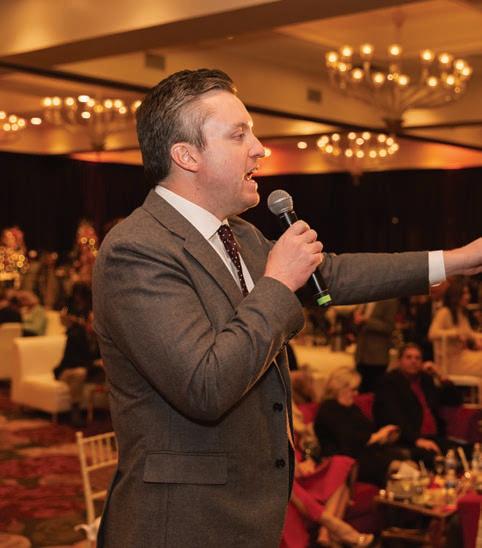


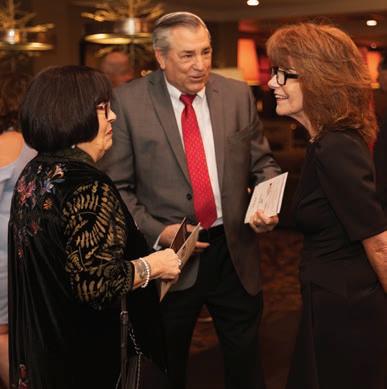
A new fundraising record for Easterseals Midwest — $888,968 — was set as over 400 local attendees gathered for the 40th annual Festival Gala and Auction. The funds will support Easterseals’ work to provide life-changing services to the nearly 6,500 adults, children, and families who count on the organization for daily support. The organization is one of the largest nonprofit providers of disability services in the Midwest, spanning four service areas: autism, community living, early childhood-home visiting, and employment. Since its inaugural year, Festival has raised nearly $11 million in support of Easterseals Midwest. Philanthropist Judy Kent was honored at the event for her years of service to the organization. This was Kent’s 20th year chairing the Festival Gala and Auction, which she hosted alongside her husband, Jerry. “Under Judy’s hands-on leadership, Festival has transformed into what many attendees consider their kickoff to the holiday season,” said Wendy Sullivan, CEO of Easterseals Midwest. “Her passion for Easterseals’ mission is unmatched. I can’t thank both Judy and Jerry enough for everything they’ve done for the thousands we support.”
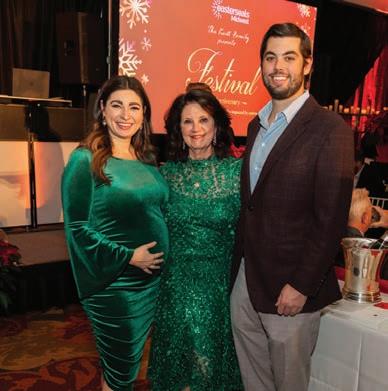
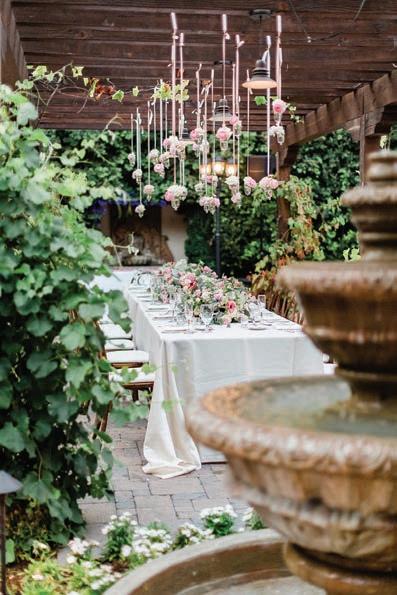

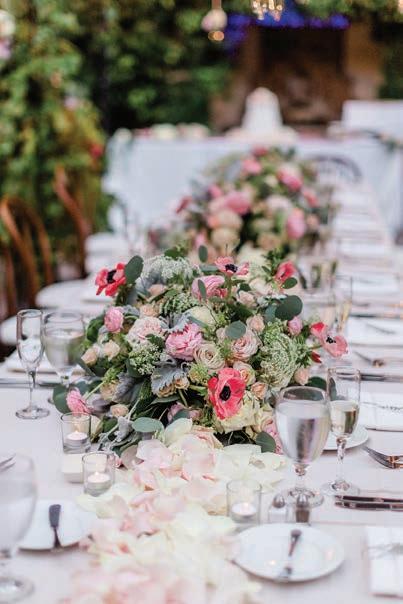












Nelly pulled out all the stops for his party with a purpose, raising money for Make-A-Wish and the granting of college scholarships, as well as celebrating his hometown St. Louis. Held at the Four Seasons Hotel, guests included Ashanti, DMC of Run DMC, Murphy Lee, Kyjuan, City, Slo’Down, Blanco Brown, Isaac Keys, Jermaine Dupri, Monica, Polow Da Don, Wyclef Jean, Bow Wow, DJ Irie, Ron Isley, Big Boss Vette, Jon Jay, Ozzie Smith, Jim Edmonds, Torry Holt, Mark Clayton, Orlando Pace, Rasheeda, LaToya Forever, Madisin Rian and more. The headliner for the after-party was Wyclef Jean. He was joined by attending musical guests, who took over the stage for a group jam session. The surprise of the night was Nelly bringing up Murphy Lee, Slo’Down and Kyjuan to perform with him and City. The group played a variety of fan favorites including “Air Force Ones,” “Wat Da Hook Gon Be” and “Batter Up.”



All his life, Wesley Bell has worked to find solutions to problems big and small. Raised in North St. Louis County, Bell is the son of a police officer and county civil servant.

Wesley is committed to strengthening our economy by focusing on workers and job and skills training, lowering health insurance and prescription drug costs, reinvesting in early childhood care and education, standing up for seniors, and protecting our planet by fighting climate change.
To learn more about Wesley’s campaign, visit: Bell4MO.com







The 65th annual Fleur de Lis Charity ball was held in late December at the Hyatt Regency Saint Louis at The Arch. Matuschka Briggs chaired the ball with Mimi Fonseca, president of the Fleur de Lis organization. As is its tradition, the proceeds from the ball, at which 30 young women are presented to The Most Reverend Mitchell T. Rozanski, Archbishop of Saint Louis, benefit SSM Health Cardinal Glennon Children’s Hospital. Over the years, the annual debutante ball has raised millions of dollars to help provide free care at Cardinal Glennon to children in St. Louis and the surrounding bi-state area.
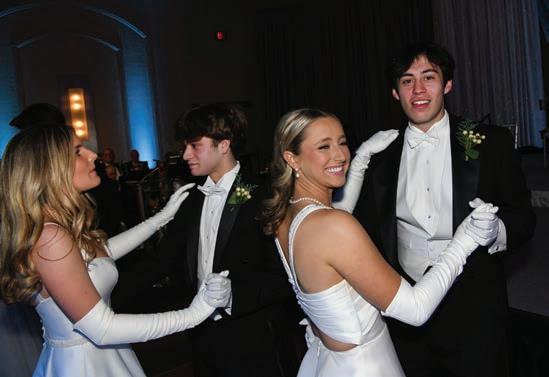


A HAND-SCULPTED HEART BY SIMON PEARCE.
THIS SMALL YET SUBSTANTIAL PIECE IS DESIGNED WITH WEIGHTY, BRILLIANTLY CLEAR GLASS FORMED INTO A CLASSIC HEART SHAPE. AVAILABLE IN TWO SIZES.











The annual Dancing with the St. Louis Stars 2024 Competition and Gala benefiting the Independence Center, raised a record $650,000-plus this year. Sponsored by Emerson and held at the Ritz-Carlton, guests were treated to dance numbers by local luminaries including Matt Sebek, Chief Experience Officer, St. Louis City SC, and his daughter, Lennon; Sara Yang Bosco from Emerson, Carmen Fronczak of Friendship Village Senior Services, Gannash Iyeerr, Independence Center member, Matt Slater of the St. Louis Cardinals and Kelly Kittenbrink of Thompson Street Capital Partners. The Independence Center’s mission is to provide services and resources to people with serious and persistent mental illness.



















Threads is the signature biennial fundraiser of the Missouri Historical Society. The event embodies the mission of the institution and raises funds to continue the important work to preserve the history of our region. Ten St. Louis–based designers will create a 21st-century piece inspired by MHS’s textile collection. Each piece designed is, in essence, a conversation between the past and the present, drawing on history to inform modern creative expression. Please join us for this high-energy fashion event!
Larinda Burnside
Laura Cohen
Anna Crosslin
Caressa Davis
Vanessa Davis
Julie Desloge Dubray**
Jane Gleason
Elleard Felix Webster Heffern
Frank Jacobs and Marylen Mann
Veronica McDonnell**
Yolanda Yoro Newson










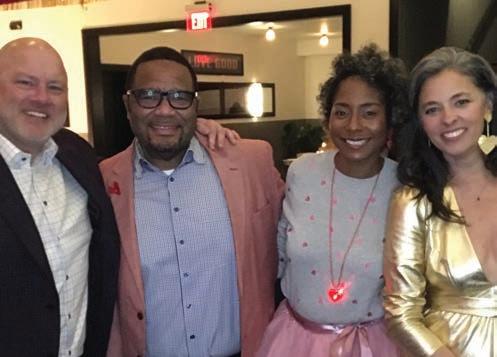


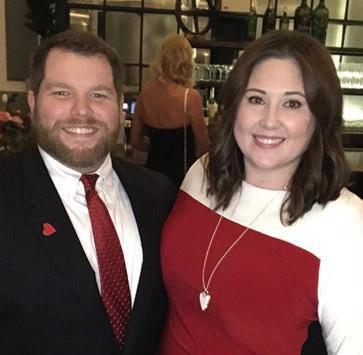




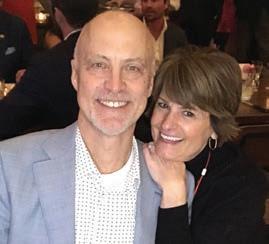



Founded by Becky and Greg Ortyl in memory of their son Oakes, who was born with a congenital heart defect, the Mighty Oakes Heart Foundation (“MOHF”) is now entering its 13th year. The organization supports families affected by congenital heart defects financially, emotionally and in ways unique to their needs. In just this past year, MOHF helped a record 936 families!






